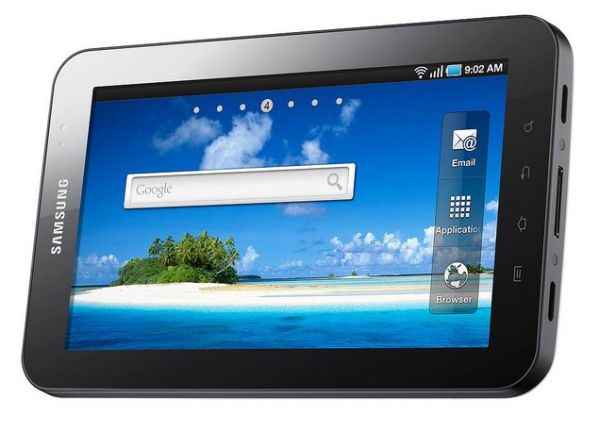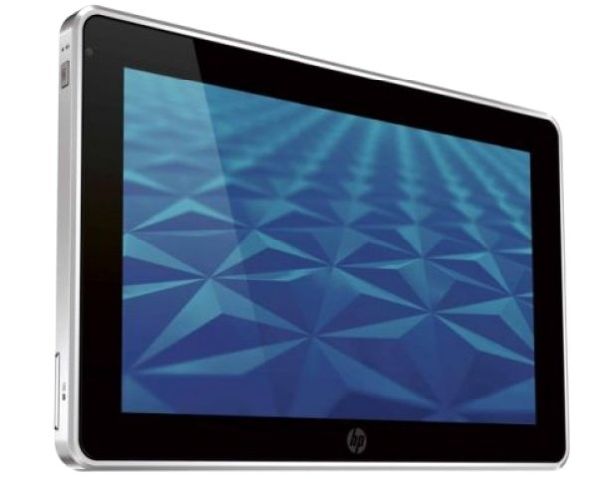Holiday Smartphone Buyer's Guide
by Vivek Gowri on December 4, 2010 5:00 AM EST- Posted in
- Smartphones
- Guides
- Holiday 2010
- Mobile
Tablets

If we’re talking about the tablet space, we pretty much have to start with the iPad. Love it or hate it, you must admit that it is the product that sets the benchmark for the entire flood of tablets releasing over the coming months. Since the uber-hyped tablet released earlier this year, nothing has changed on the hardware front, but the fairly significant iOS 4.2 update released, bringing along with it support for multitasking, homescreen folders, and AirPrint.
I’ve been running the 4.2 RC on the family iPad for some time, and to me, the biggest difference is the multitasking. It makes the iPad significantly more versatile as a device, allowing users to switch between apps seamlessly. It’s the same kind of “intelligent app pausing” that Apple does with the iPhone, so it’s not really multitasking in the true sense of the word, but it works
Either way, the iPad figures to be a real force in the tablet world for the foreseeable future. There’s not much to recommend against it, unless you really hate the iOS platform. If you’re looking to get into tablets, it’s a pretty good place to start. Very well designed, very user friendly, and quickly gaining mainstream popularity. The only hesitation is that Apple probably has a 2nd generation iPad with dual cameras and a faster, A9-based SoC right around the corner, though it could debut any time between January and April.
If you’re unwilling to tie yourself to the iOS/iTunes/App Store triumverate, then you’re in luck, since Android-based tablets seem to be releasing right, left, center, and any other direction you can think of. The one that’s gotten the most press recently is Samsung’s new Galaxy Tab. Built around a 7” WSVGA LCD screen and the same Cortex A8-based Hummingbird processors as the Galaxy S line, the Tab is a bit smaller and a bit more powerful than the iPad. It runs Froyo (which, interestingly enough, is something that the Galaxy S phones can’t claim) and comes with Market preloaded. Considering that Google usually doesn’t allow tablets to come with Market, that’s a pretty big coup for Samsung. It’s available from all four carriers and also as a WiFi-only device, basically mirroring the 16GB iPad’s price points.
If you’re looking to go the WiFi-only route, there are other options from smaller manufacturers that are definitely worth taking a look at. Archos' value priced $299 101 tablet is set to ship with Froyo sometime shortly in the US, and is already shipping in Europe. Another tablet that showed up on multiple Black Friday sale papers was the Viewsonic G Tablet, a 10” Froyo tablet with Nvidia’s elusive Tegra 2 platform underhood. Dual Cortex A9’s, yes pleaaaase. Hardware accelerated 1080p playback on a $399 tablet sounds pretty impressive too, to be honest. Compared to the iPad and the Galaxy Tab, which are basically running on smartphone guts, the Tegra 2-based Android tablets have the potential to really unlock some of the more interesting media playback and gaming uses that the other SoCs simply don’t have the computing horsepower for. Now, the Viewsonic doesn’t get Android Market preinstalled like the Galaxy Tab, but sideloading it onto the device is a pretty painless process. Obviously, going for a more obscure tablet such as the Viewsonic or any of the other lesser-known Android tablets is taking a risk, but in the brief moment I played with it, the Viewsonic felt reasonably well put together and seemed to have CPU performance just this side of the Moorestown tablet we played with at IDF (I only had time to run one benchmark). We have one on the way for review, so we’ll see, but the first impression wasn’t bad.
Like I mentioned earlier, the Viewsonic isn’t the only Tegra 2 tablet in town; Advent’s Vega on sale in the UK for 249 quid, Innovative Converged Devices’ Gemini and Vega are on the horizon, NotionInk is supposedly on track to release their highly touted Adam, and a simple Google search yields a bunch of companies I’ve never heard of (Malata, E-Noa, eLocity) claiming to be readying Tegra 2/Android tablets for release in the near future. Not to forget larger companies that are rumoured or have released prototypes of Tegra 2 tablets, people like Motorola, Dell, HTC, Acer, ASUS, MSI, Compal, Foxconn, Quanta, and Toshiba, amongst others. We will be assaulted by a deluge of Android tablets very soon, so if that’s what you’re looking for, you may be better off waiting until then, especially given that Google has promised to provide a more unified tablet computing experience with Gingerbread, the next revision of Android.
For non-Google or Apple tablets, you’re kind of stuck for the moment. Microsoft made a big fuss about Windows 7-based slate tablets, like the HP Slate 500 and the ExoPC, but thus far Windows tablets have been based on netbook internals (ugh, Atom) and have provided poor battery life and performance. Not a good combination. Also, they tend to be on the slightly expensive side, with the ExoPC starting at $549 (which is decent, considering that comes with 32GB of storage) and the HP Slate starting at a legitimately high $799 pricetag. Unfortunately, Microsoft has not (yet) given any indication that they will be releasing a tablet-specific OS based on Windows Phone 7 and they killed off their very exciting Courier tablet project earlier in the year, so for now, Microsoft figures to be at most a bit player in the internet tablet market. Moving to HP, it is almost inevitable that we will eventually see a WebOS-based tablet similar in size and shape to the Slate, but there is no indication as to when that will happen other than “sometime next year”. RIM has also debuted a 7” tablet, called the PlayBook, with a completely new OS. So there’s a ton of interesting tablets releasing shortly, so unless you’re set on an iPad or a Galaxy Tab, I’d personally recommend waiting.












52 Comments
View All Comments
jalsa777 - Saturday, December 4, 2010 - link
i do not know your visitor's demographics...But i am preety sure a lot of visitors are from outside the USA.
The article would be much better off if the phones were divided by segment or price band.
StormyParis - Saturday, December 4, 2010 - link
Agreed. I dropped the article when I realized the structure made no sense to me.Brian Klug - Saturday, December 4, 2010 - link
Hey Jalsa777,Definitely see page 5 - we do realize that a huge percentage of readers aren't from American markets and are really trying to get a more global spread of devices in coverage as well.
The LG Optimus One is probably our first real international device, and we've got an N8 review coming too. I know we have assets moving into place in the UK to start covering devices in Europe as well, so it's definitely happening. ;)
-Brian
Pataling - Saturday, December 4, 2010 - link
The Palm Pre 2 should have got a mention in the unlocked/international section. Won't Anandtech be reviewing it anytime soon? It is a "developer's phone" after all.jordanclock - Saturday, December 4, 2010 - link
I found it strange that it was only mentioned in the ATT section. Since it isn't available through ATT, it really should have been put in the Unlocked/International section, unless for some reason it can't do any frequencies except for ATTs.Rick83 - Saturday, December 4, 2010 - link
Yes, there are no cell network versions, but at their price points they offer quite a lot, and beg the question how apple and samsung end up charging the ridiculous amounts the do, for their hardware (which should be cheaper than netbooks, not more expensive...yay status-symbol-markup)It is them that also, more than a year ago, put one of the first Android Tablets on the market (my Archos 5 IT is a year old now....) and now they even made the move to capacitive touch screens (though I still prefer resistive....).
Anyway, their 70 and 101 models should be at least worth a mention, as they are actual products, and probably enjoy a bigger market share than the ViewSonic.
And not even listing Archos with the "also ran"? That's really questionable...
So anyway, if you're looking for a tablet for serious work, and not as a status symbol, give the Archos 70 a good look....USB host available via cheap adapter, priced low, connects via standard USB cable, HDMI out, micro SD.... Though apparently you give up 3g (...well, mifi is an option, or BT tethering to your cellphone) and GPS (that might hurt if you plan to use it for navigation...though 7 inch is a bit large for that kind of thing anyway.
Oh and there's a 10 incher as well, for a similar price.
Skott - Saturday, December 4, 2010 - link
Yes, I don't understand why they didn't look at Archos as well. Perhaps because they are not as big of a company as the others? That new Archos 101 (10.1) just released recently and if anything has a chance of matching or surpassing the iPad it would be it. It uses the newer version of FROYO 2.2. At $299 its very competitively priced.VivekGowri - Saturday, December 4, 2010 - link
You actually can't get the 101 or the 70 in the US yet, but yeah I did forget to mention them. I was really determined not to mention the Archos 9 PCtablet, since I've played with that a few times and found it a major disappointment (performance and resistive touchscreen, amongst other things). I'll probably add in a mention of the 101, cause that does have a really good price on the low end (the 16GB ends up pretty close to the Viewsonic, which is a lot more powerful.)Roland00Address - Saturday, December 4, 2010 - link
Make sure you do a mini review before and after you root the device. I am just wondering how useful the device will be with no app support.DigitalFreak - Saturday, December 4, 2010 - link
I bought a Viewsonic G tablet this past week. The stock software is ok, but not great. The latest update includes the Handigo app store, which is better than nothing but not anywhere near the Android Market.Where this device really shines is with the alternate roms. TNT Lite seems to be the best at the moment. It replaces the interface with the stock Android UI. There's hack that gets you the full Android Market and Flash support as well. Unfortunately, Android 2.2 doesn't support multi-core, so you're stuck using 1/2 the processing power of Tegra 2. Hopefully 2.3 will add that. Even with 2.2, it's still a fast device.
If you plan on keeping the G tab stock, then it's merely ok. If you like tweaking though, it's definitely worth the money. XDA has an forum dedicated to it.